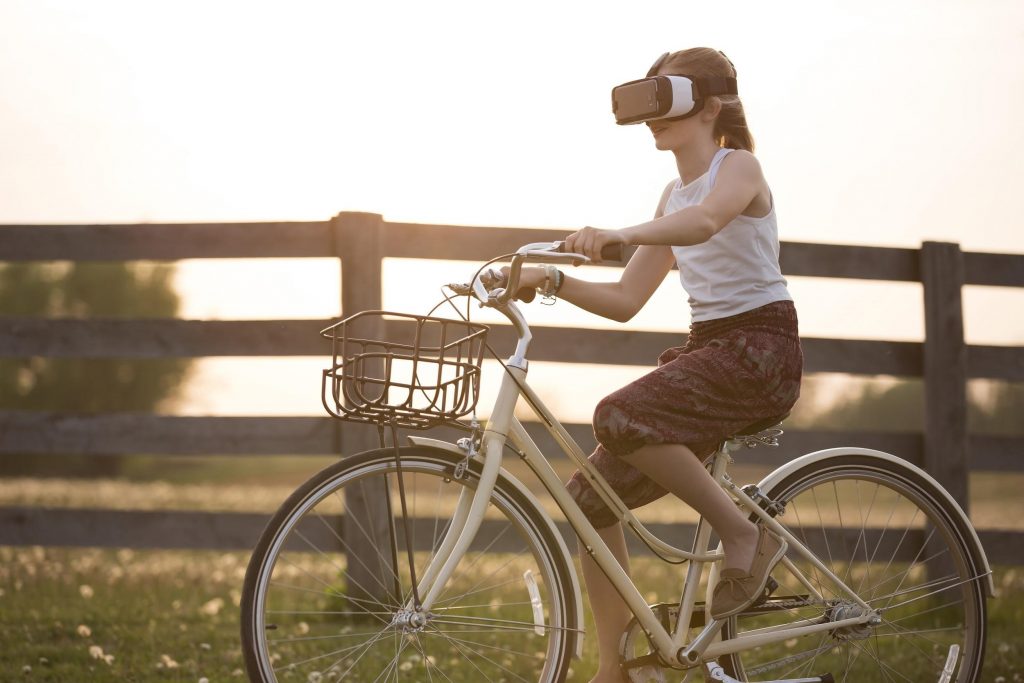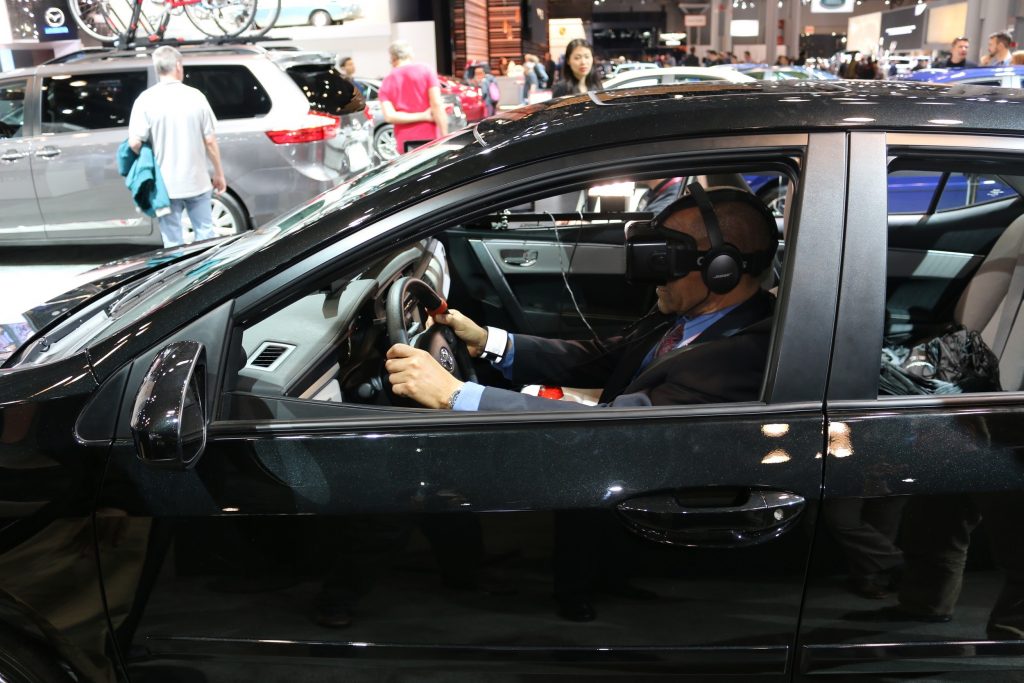InTrans / Mar 17, 2017
Driving the future: What is virtual reality?
Go! Magazine
 posted on March 17, 2017
posted on March 17, 2017
In the last 10 years or so, technology like smart phones, tablets, and computers have become an integral part of everyday life.
Nearly 9 in 10 Americans are online, up from about half the population in the early 2000s. Roughly 77 percent of Americans own a smartphone, and nearly 7 in 10 Americans now use social media, according to the Pew Research Center—a nonpartisan fact tank located in Washington, DC.
In other words, in America—and many other parts of the globe too—more people are plugged into the digital world now than ever before. Growing up and living with technology has become a normality. One component of the digital world that will continue to advance and grow in the coming years is virtual reality (VR).
What is VR?
Virtual reality is a term used to describe a computer-generated, three-dimensional (3D) environment that’s meant to be explored and interacted with by its user. Virtual reality technology usually consists of a headset around the eyes and may include additional gadgets used to tap into other physiological senses or sensations.

Virtual reality can be used for a number of things, including, but not limited to, entertainment, automotive manufacturing, education, meditation, shopping, and military uses. Today and moving forward, VR isn’t just a luxury but also an essential engineering and educational tool.
Virtual design
So how will VR play its part in the world of transportation? For starters, it’s helping auto manufacturers make cars more efficiently. Using VR technology, the Ford Motor Company is yet again raising the bar for automotive production.
Although manufacturers have been using high-tech simulations for decades, the Ford Motor Company has now made virtual reality integral to its automotive development with the Oculus Rift: a VR device for automotive designers and engineers. It allows them to closely inspect different elements of cars and spot potential problems before the design is concrete.
Virtual education
Virtual reality may even have a role when it comes to transportation education, too. Can you imagine using virtual reality when learning to properly cross the street or drive a car?
In addition to design, the automotive industry is using VR tools to educate teenagers and parents about the modern dangers of driving. For example, Toyota is using Oculus headsets to provide an immersive educational experience in their “TeenDrive365 Distracted Driving Simulator.”

With large computer monitors and furnished with a steering wheel and car seats, the TeenDrive365 Distracted Driving Simulator replicates the dangers of inattentive driving in the hope to leave its participants with a deeper understanding of what it means to be a distracted driver and warn of the deadly risks that come with it.
“Smart” driving?
Does a “smarter” driver make a better driver? Is plugging into virtual reality the best way to learn about traffic and transportation in the real world? With the unfolding of new technology now and in eras past, only time can tell.
However, with concerns surrounding virtual reality and artificial intelligence being so plentiful, do the benefits outweigh the risks? We’ll leave that to you. Tune into the rest of the series for the pros and cons.
References
http://www.pewresearch.org/fact-tank/2017/01/12/evolution-of-technology/
https://www.vrs.org.uk/virtual-reality/what-is-virtual-reality.html
http://www.livescience.com/53392-virtual-reality-tech-uses-beyond-gaming.html
Related links
(Video) TeenDrive365: https://www.youtube.com/watch?v=SL4o4oB6Ilg
(Article) Oculus Rift for pedestrians: http://news.softpedia.com/news/uk-transportation-issues-are-being-currently-solved-using-virtual-reality-487981.shtml
By Hannah Postlethwait, Go! Staff Writer